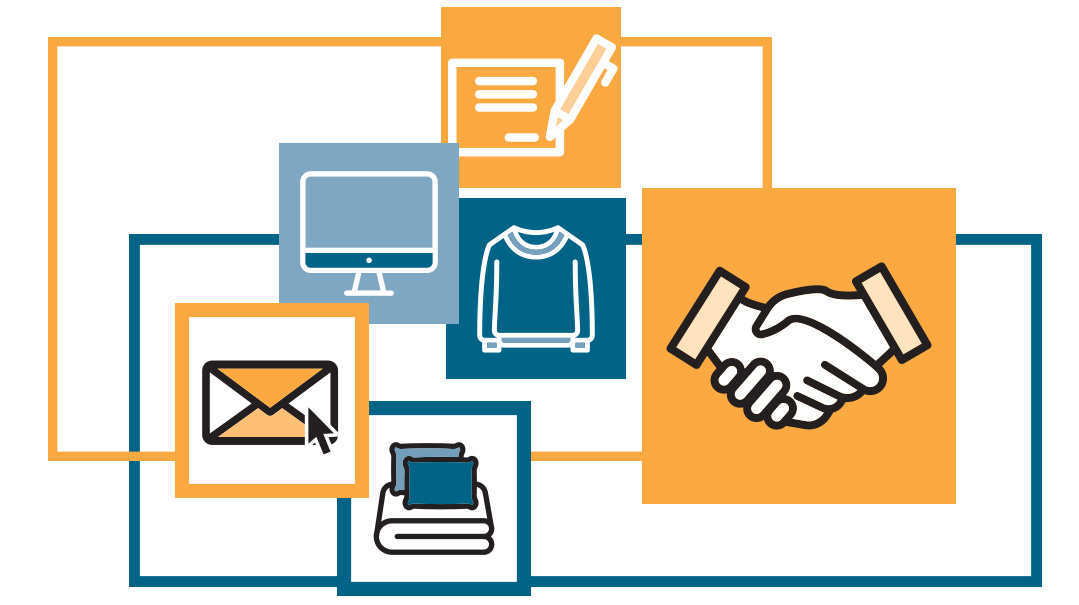Give and Gain

Five strategies you can employ for end-of-year charitable giving

December 31st is looming close, and with it come major deadlines, particularly those associated with tax benefits. Charitable donations can be a win-win option —help others while cutting down on your taxes — but the options can be confusing.
Let’s start with the basics: Do you take a standard deduction or do you itemize your deduction? Standard deduction refers to the portion of income not subject to tax that can be used to reduce your tax bill and is a specific dollar amount, depending on filing status. While taking the standard deduction works for most people, itemized deductions work better for others.
Itemized deductions, created in order to incentivize taxpayers to take certain actions such as buying a house and making donations to charity, vary for each individual. These are basically expenses allowed by the IRS that can decrease your taxable income, including things like unreimbursed medical and dental expenses, home mortgage interest, and charitable donations.
There’s a limit to how much you can deduct for charitable donations. The basic rule is that your contributions to qualified public charities, colleges, and religious groups generally can’t exceed 60 percent of your Adjusted Gross Income (AGI). (For 2021, you can give 100 percent of income.) The caps are a bit lower for gifts to other types of nonprofits (such as donor advised funds and private foundations). When it comes to gifts of appreciated property, the limit drops to 30 percent of AGI.
So it’s mid-December, and you have just a short time to make a donation and reduce your tax bill (pending your accountant’s advice). Below is a list of five strategies you can employ for end of year charitable giving.
Donor-Advised Funds
Let’s say your accountant says you would benefit financially by giving $75,000 in charity before December 31st. But you prefer to give charity in small increments throughout the year, not just all in one shot. What should you do? According to Aron Schlesinger, managing director of The Donors’ Fund in Lakewood, NJ, a donor-advised fund (also known as a DAF) can make your life much easier: You simply open an account with a donor-advised fund, make an irrevocable contribution to your account, and get the tax benefit right away. Now that your money is in this account, you’re free to make donations whenever you want — tomorrow, at next month’s parlor’s meeting, or in a year.
A DAF also makes record-keeping much easier, as the IRS look back for audit purposes is seven years. So instead of saving seven years of receipts, you need to keep track of only one receipt from when you made the initial contribution to your account.
Another significant benefit is that while the charitable contribution is sitting in your account waiting to be dispensed, it can be invested, perhaps even by your personal financial advisor (as is the case with The Donors’ Fund), where it can continue to grow.
Jacob Schweitzer, director of Pledger Charitable in Brooklyn, NY, remembers a client who donated money to charity using his private foundation. This resulted in filing requirements, fees, and donations being public knowledge, among other inconveniences. When he subsequently opened a Pledger DAF, he got the privacy he wanted, there were no filing requirements, and fees were eliminated. With the investment option, the initial contribution grew, allowing for greater donations.
Another advantage of DAFs is that they allow for different methods of giving charity from your account. For example, The OJC Fund, based in Brooklyn, NY, allows their donors to give charity through a multitude of options — an online portal, an app, an OJC Charity Card, OJC certificates, or Nadven certificates. Whether you’re at a parlor meeting or on the organization’s website, you have a way to give to them.
Bunching It Up
Let’s say you tend to give $10,000 in charity each year. With only that amount in charity donations, you may not be able to itemize your deductions, but instead take the standard deduction. Here’s another idea to explore: bunching. Instead of giving $10,000 per year, consider giving $20,000 every other year. This means that one year you’re itemizing and the next you’re taking the standard deduction. After running the numbers, some people find that they get a larger tax deduction over time with bunching.
Avoiding the Capital Gains
You may not have enough time to make a property donation before year’s end. However, making a donation of long-term appreciated stocks may be in the cards. Let’s say you bought Tesla stock a few years ago and are concerned that the stock is running out of gas. If you sold it today, you might be paying tons in capital-gains taxes. Instead, consider donating the stock to charity at its current fair market value. This means that you get the credit for the donation of your Tesla stock at its current value, and you avoid having to pay taxes on the capital gains. It’s a win-win!
And of course, don’t forget your crypto wallet. You may have been declared the Oracle of Lakewood after having bought crypto a few years ago (or even a few weeks ago, depending on the currency). With your crypto wallet bursting at the seams, maybe now is the time to call up your local tzedakah organization to ask if they’d like a donation in Bitcoin or Ethereum.
Two for the Price of One
Let’s say you’re over 72 and in “RMD Land” (you need to take a required minimum distribution from your retirement account). If you haven’t fulfilled this requirement yet, you can take your RMD and send it straight to a qualified charitable organization. This allows you to satisfy the requirement, get credit for the charitable donation (up to $100,000), and avoid taking the income, which is taxed at state and federal rates.
The Roth Conversion
Waiting to convert your traditional IRA to a Roth? Maybe now’s the time. Let’s say your Roth IRA has dropped in value or you anticipate being in a higher tax bracket in retirement. If your accountant is advising you to convert your traditional IRA into a Roth and you’re able to stomach the tax hit, aligning your end-of-year charitable giving can be a strategy to reduce the tax bill from the conversion.
As we make the last dash to the 2021 finish line, keep in mind that slow and steady wins the race. Employing smart, well-thought-out strategies is the key. Even if your accountant hasn’t contacted you regarding a smart tax-savings plan, now’s the time to make the call and ask what your options are.
(Originally featured in Mishpacha, Issue 891)
Oops! We could not locate your form.






